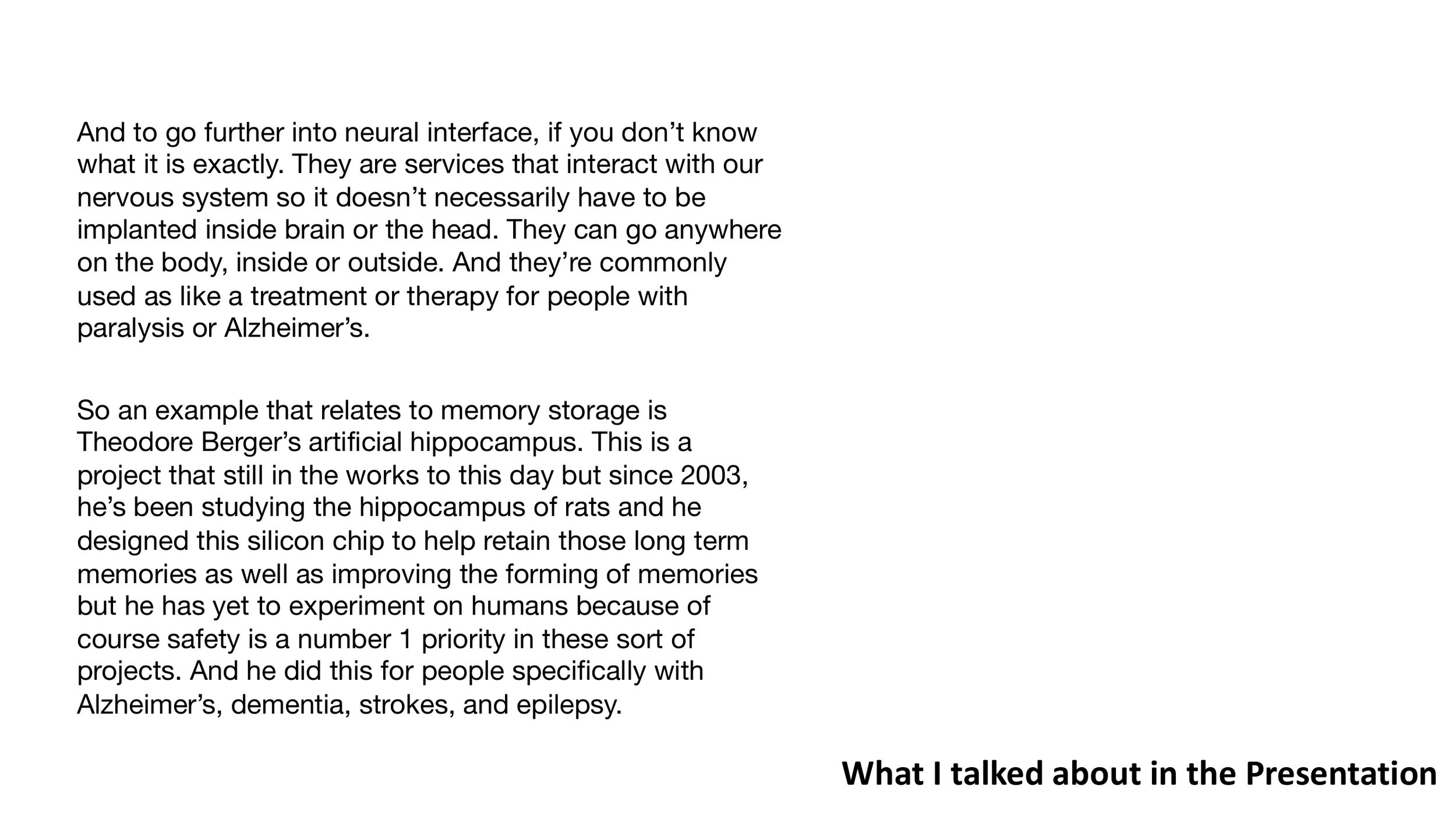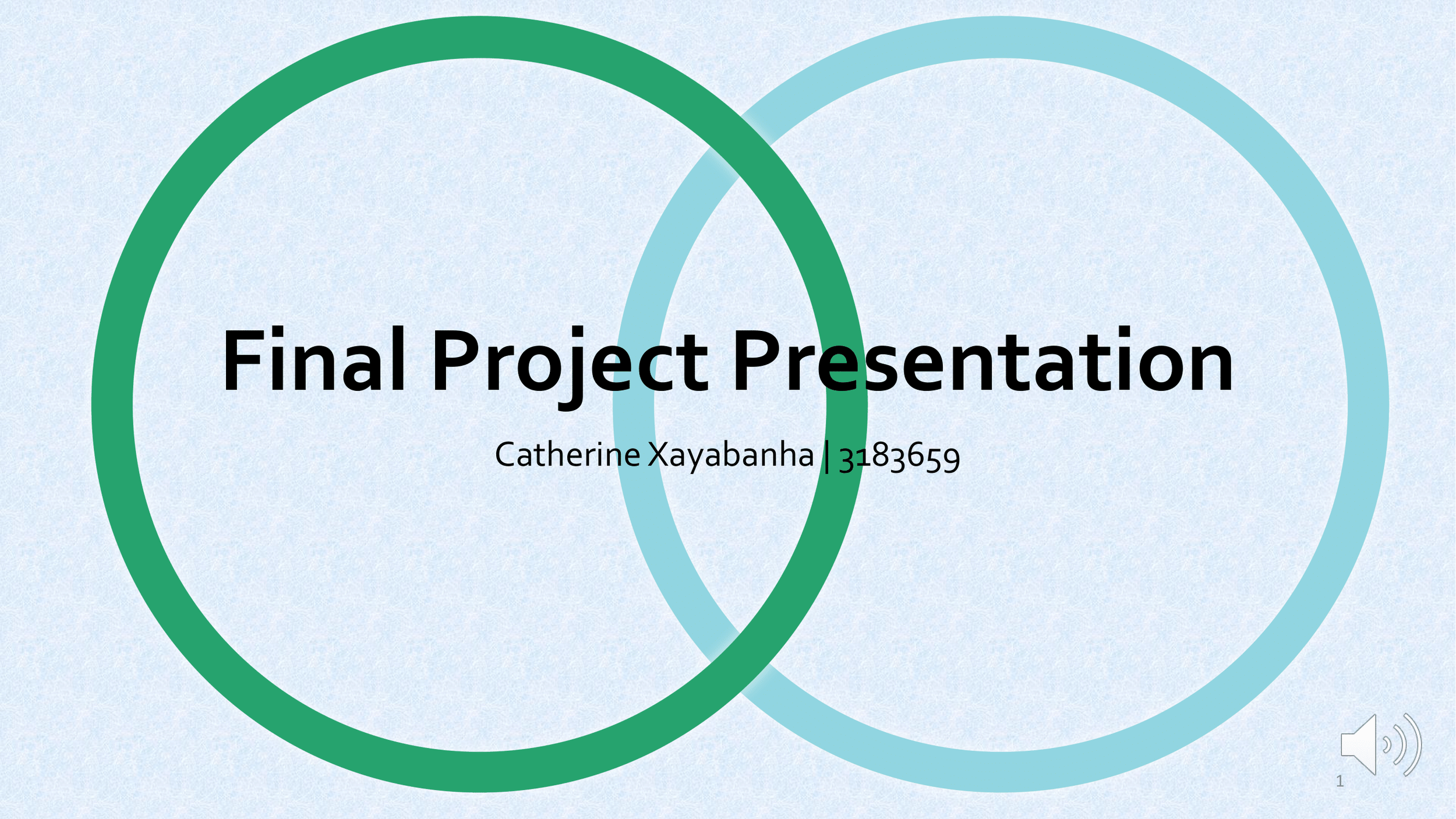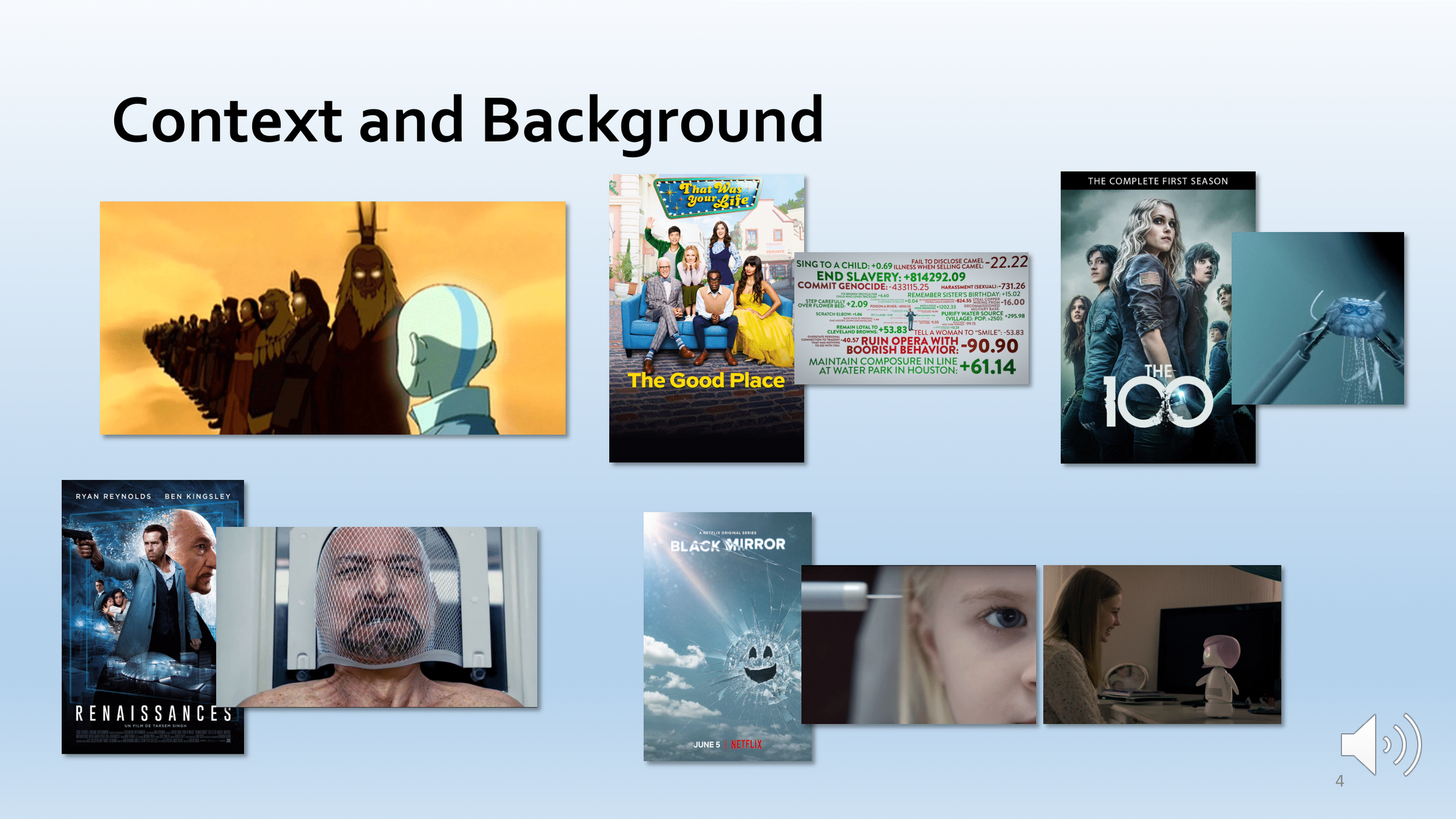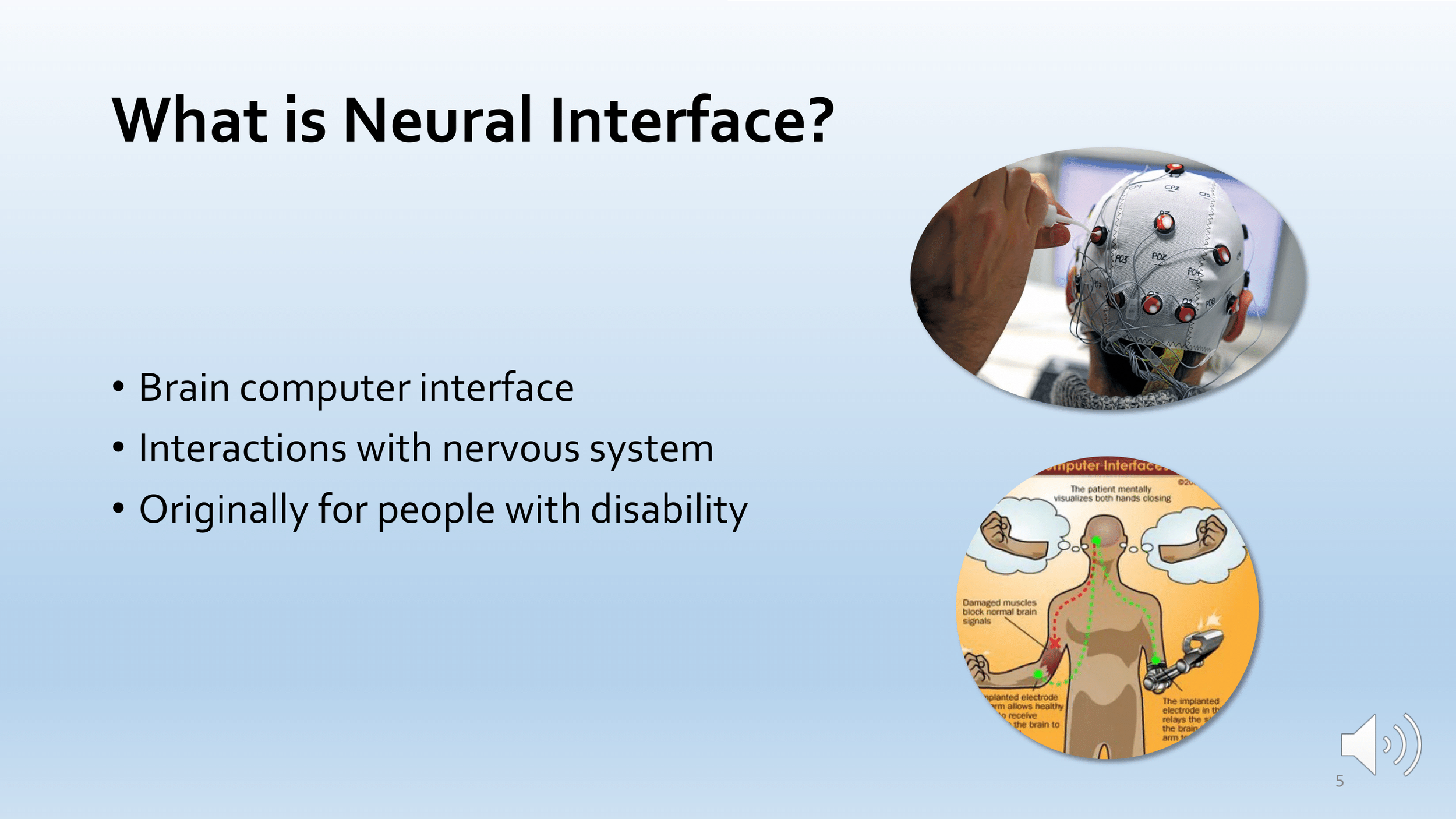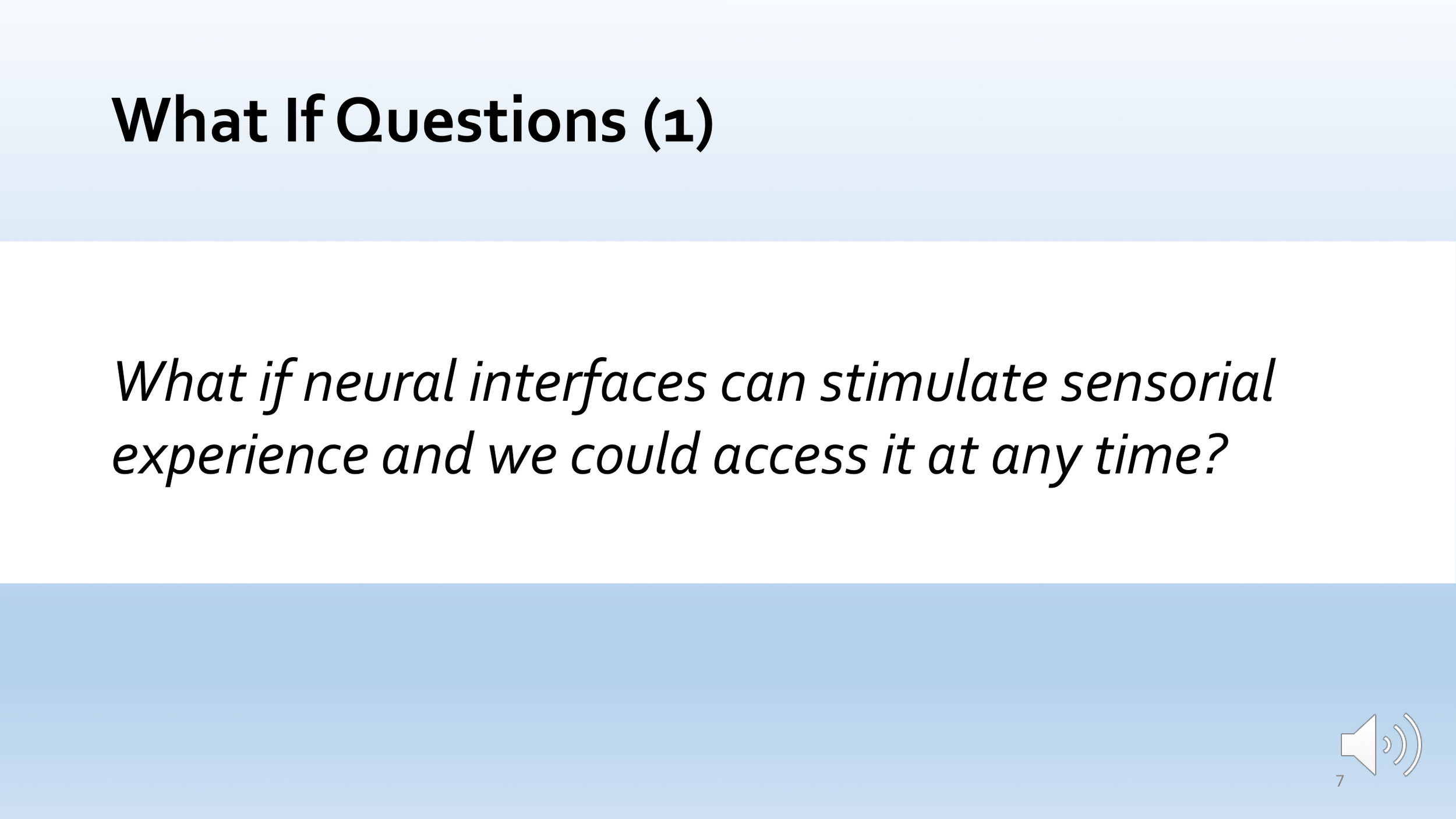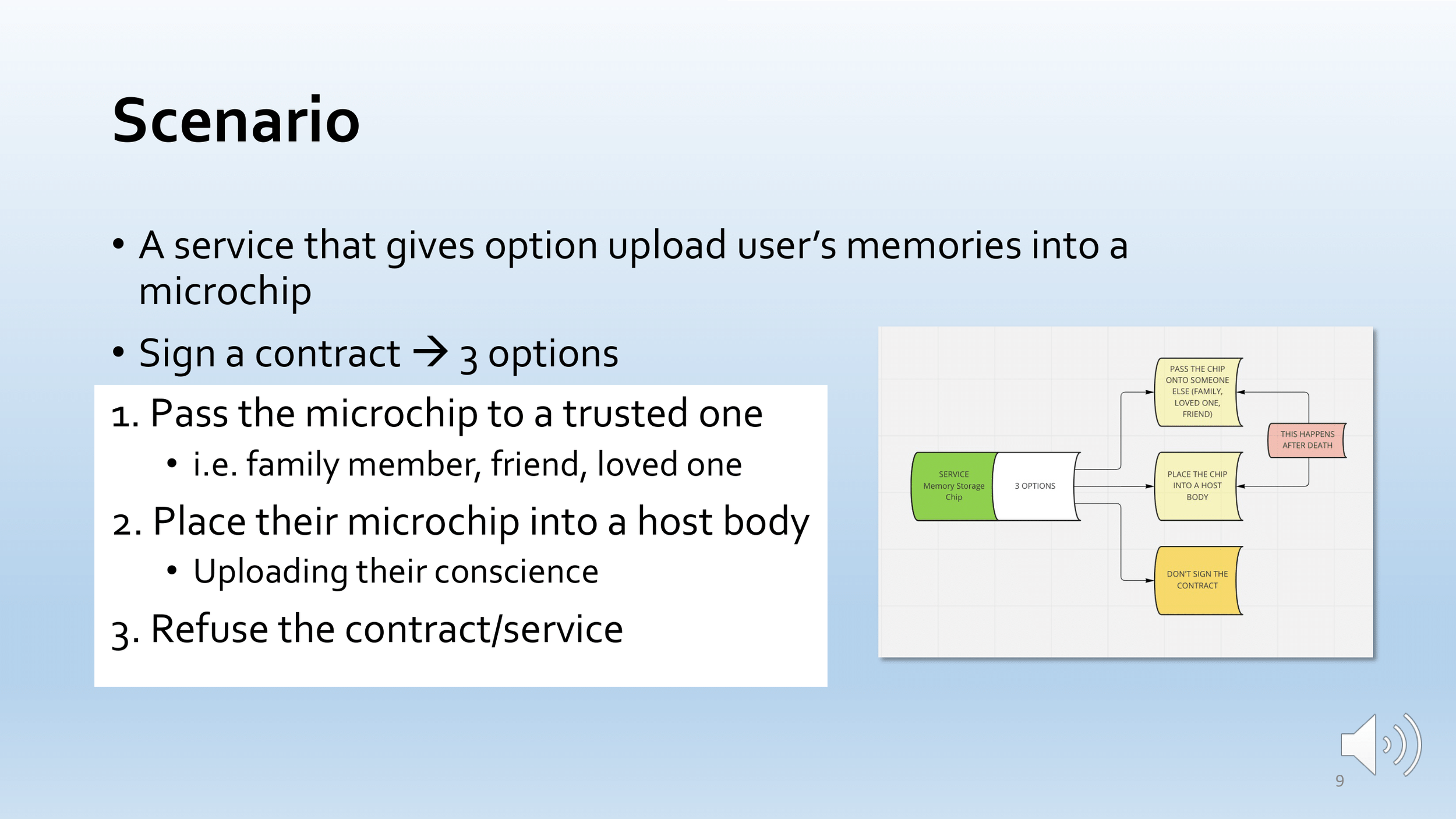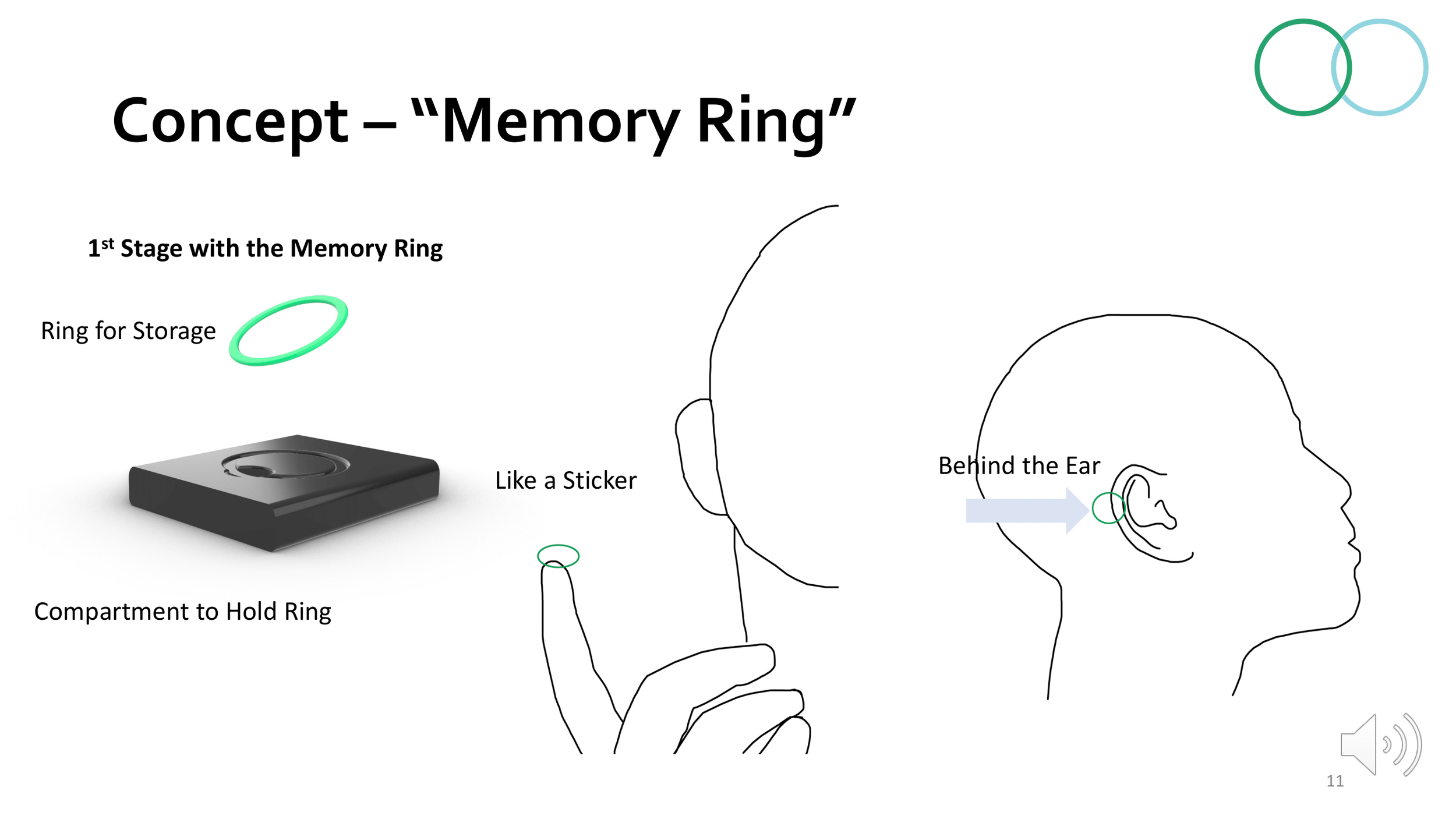Memory Ring
Solo Project - Interaction Experience - OCAD University
Reading Time + Video Time - 4 minutes
Project Goal
To propose and develop an interactive experience, space, product, or service that showcases, critiques, or discusses a social, ethical, cultural, or moral issue from an alternative reality related to a topic of deep personal interest. The aim is to generate discourse and provoke critical thinking, rather than problem solving, and reflect on the outcomes individually or as a group.
Project Summary
An invasive neural technology that gives you two options: 1. store it in a "storage drive" and pass it on to a friend, relative, or loved one after death. 2. implant the memories into an android as an extension of yourself, reborn into a new life with new opportunities.
Reflection
The key takeaway from this project is to value what we have and live our lives to the fullest, as we do not know when new technologies like neural interface may change our lives. Neural interface is not a bad thing and can provide second chances and opportunities to users that they may have thought they would never have. The future of neural interface may skyrocket and be available to everyone, similar to the easy access we have to phones or computers. This project has impacted my view on interaction/experience design, highlighting the complex relationship between decision making and design in the development process. I believe that the new learning from this project will be helpful in adjusting to new life-changing technologies in the future, such as neural interface.
In Depth - Process
Aha Moment
My aha moment was rooting the culture, Buddhism, into my design. Specifically, the idea that the life is a cycle of birth and death and how people (the monks) can rebirth multiple lifetimes until they reach the state of Nirvana where they are satisfied with themselves and no longer want to rebirth or in my design’s case, upload themselves to another host body. I really loved the connection to Buddhism since some of my relatives follow this culture and some are devoted followers. Also, reiterating the idea of the cycle through the repetition of circles or “rings” in the service. The Memory Ring is a microchip that will always record your memories until death. The interface that allows you to see the memories have the memories arranged in circles because there is no expiry date to any of these recordings, they will always forever stay uploaded in the Memory Ring.
Uh-oh Moment
My uh-oh moment or my concern would probably be with the option to upload to another host body because I should’ve elaborated on how it would work if the user were to upload their body again after they did it the first time. I did talk about the effects/consequences about this option, but I just think it could’ve been explained more as equally as the option to sign the contract so that you can pass the memories onto someone else. So, I should’ve elaborated on the contract conditions. Perhaps, I could write a rough draft of a contract in the future if I choose to keep working on this project. And that would add onto my concern of the legal/ethical issues with this service since there is no official law that regulates the use of neural interface in our society.
Yay Moment
My yay moment is that I was able to gather my research so that I could create a believable dystopian service and I was able to look in on the different perspectives based on the frameworks from my project documentation report. For me, this service was not unbelievable but rather obtainable, because we have seen many similar products/projects on the internet that try to strive for this end goal. And the thing about the Memory Ring is that it doesn’t really exclude or discriminate against them except for the fact that only people over 18 can choose to use the service or not. However, the point is that the Memory Ring can be of service to anyone. It is not looking for a specific race, gender, or class. All it really needs to function is a conscience.
Working by Myself
I admit that working by myself was a bit difficult considering my idea required lots of research. But I tried my best to follow a timeline. However, I did end up submitting the project late because I didn’t want to submit a project that was rushed. I really wanted to get all my sufficient research and make sure that the Memory Ring would make sense and it would have that effect where people start to wonder if they would use this same service in their lives.
If I could travel back in time with the knowledge that you have now and could work on this project again, what would you do differently and why?
I would’ve focused more on the socio-ethical lens and dive deeper into the user’s personal identity such as incomes, background, and explore other cultures like I wanted to originally do. And the reason being that I want my end goal to be that this service is available to the entire public. But I sadly ran out of time to do in-depth research so that’s why I focused a lot on older adults or people with disabilities, groups of people that I felt should have the opportunity first to use the service.
What is your key takeaway from this project? How might the new learning be helpful for you in the future?
The key takeaway from this project is that we should value what we have whether it be our ability to retain memory, to be able to walk, or to communicate with others. And that we should live our lives to the fullest since we don’t know how long it will take until Elon Musk or anyone else will release a final iteration of digitizing the brain. Lastly, another takeaway is that neural interface is not a bad thing. In fact, it is something that people rely their lives on for their daily interactions. And what we’ve seen from the research and my scenario is that neural interface does give a second chance for the users, it gives them opportunities that they may have thought they would never see or have again in their lives. I believe in the future that neural interface will skyrocket and be available to everyone just like how we have easy access to phones or computers. So, I think this new learning will be helpful for me by helping me adjust to new life-changing technology in the future as I age and have the potential to encounter neural interface in my life.
The impact this project has had on your view/impression of interaction/experience design in general or in relation to the topic of interest you chose for this project:
In general, this project made me realize that interaction/experience design plays a huge role in our decision making and it is also the same vice versa. The two are essentially in a relationship with each other. We can see that with every decision, the design starts to develop and first starts to give off these binary options. And then from there, those options branches off based on the input that the user gives to the design. So, the process for decision making is quite complex for interaction/experience design.







